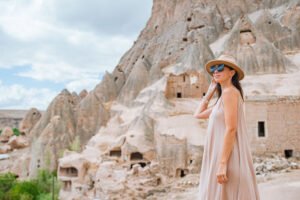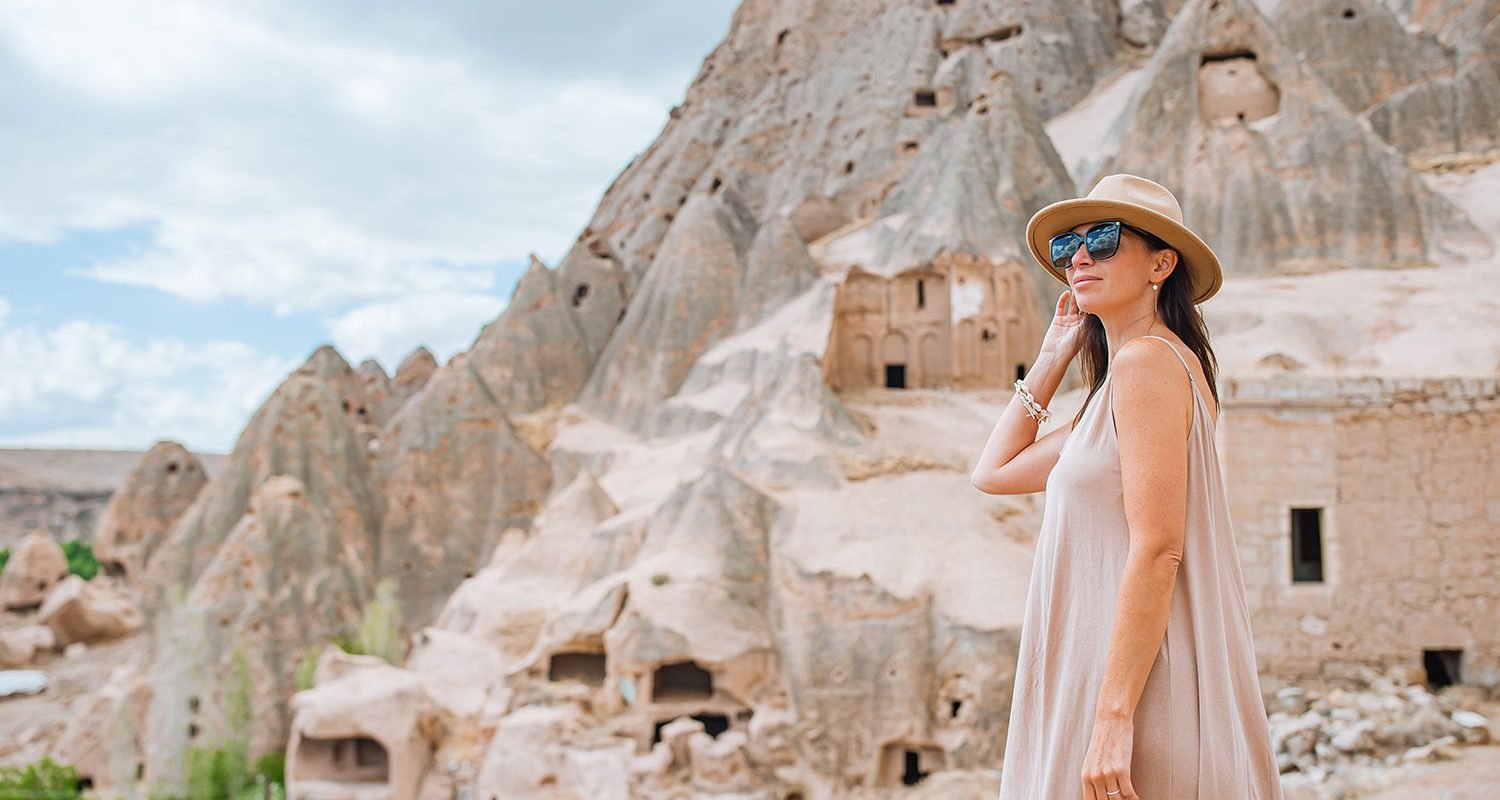There are some places that don’t just offer a destination — they offer a feeling. For me, that place was Jodhpur, Rajasthan’s stunning “Blue City.” As a traveler who loves blending history, architecture, and authentic local stories, I had always dreamt of visiting this royal city. Through The Explorer by HOV, where our mission is to spark wonder and uncover hidden gems across the world, I finally got to experience this city in its truest form.
This blog is a glimpse into my 3 days trip to Jodhpur, where I explored forts, tasted royal flavors, met incredible people, and felt deeply connected to the soul of Rajasthan.
The Beginning of My Journey: Delhi to Jodhpur by Train
My name is Simran, and my Jodhpur journey began one starry night from Delhi. At 10 PM, I boarded the train filled with excitement, snacks, and that undeniable rush that comes right before an adventure. The rhythmic sound of the train wheels became the soundtrack of my night.
After traveling across vast plains and small stations, we finally reached Jodhpur the next morning — about 10 hours later.
From my personal experience, I truly believe the train is the best way to travel from Delhi to Jodhpur. It’s not only affordable but also convenient and comfortable. Watching the sunrise as the train slowly approached Rajasthan was an experience in itself — the sky painted in shades of orange and gold, announcing the royal welcome ahead.
First Impressions: Welcome to the Blue City
The moment I stepped off the train, I was greeted by warm desert air and smiling faces. The first thing that came to my mind was — food!
We headed straight to our hotel, located just a short walk from the majestic Mehrangarh Fort. Even before checking in, I could see glimpses of the Blue City from the terrace — hundreds of blue houses glowing under the morning sun. It looked magical, almost like a painting come alive.
Jodhpur truly lives up to its nickname — The Blue City of India. Every corner looked soaked in stories, with old walls that whispered tales of kings, queens, and timeless traditions.
A Royal Breakfast: Starting the Day with Rajasthani Flavors
To explore the city properly, we decided to hire an auto for the full day. It cost us ₹1500, and our driver — a cheerful man we fondly called auto wale bhaiya — became our local guide.
Before sightseeing, we asked him to take us somewhere we could taste the best of Jodhpur’s cuisine. Without hesitation, he smiled and said, “Aapko asli Jodhpur ka swaad chahiye na, to mere saath chaliye!”
He took us to a local restaurant famous for Lahsun ka Kofta (garlic dumplings in rich gravy) and Pyaaz ki Kachori, two dishes that define the heart of Rajasthani food. The first bite itself told me — Jodhpur knows how to win hearts through food. The blend of spices, the crisp texture, and the warmth of local hospitality instantly made me feel at home.
Umaid Bhawan Palace: Where Royalty Still Lives
After a hearty meal, we headed towards our first major destination — the iconic Umaid Bhawan Palace.
Perched proudly on Chittar Hill, this grand palace is the residence of the present Maharaja Gaj Singh II. The palace is not just an architectural marvel; it’s a living piece of history.
As our guide narrated, the palace was commissioned by Maharaja Umaid Singh Ji in 1927, and the construction was completed in 1944 — right before India’s independence. Built entirely with locally sourced sandstone, the palace features 347 rooms, making it one of the largest private residences in the world.
But what fascinated me the most was the palace’s story. In 1978, Maharaja Gaj Singh II decided to divide the palace into three sections:
- 70% as a luxury hotel (now managed by the Taj Group),
- 15% as a museum, and
- 15% as the royal residence, where the Maharaja still lives with his family — including his wife Rani Shibha, their son, daughter, daughter-in-law, and two grandchildren.
One of the most interesting tales I heard there was about a ship that sank in 1942. It was carrying eight containers of European furniture and décor meant for the palace, but tragically, the ship never made it to India. Despite this setback, the Maharaja didn’t lose hope. He then invited the Polish designer Stefan Norblin, who beautifully merged European Art Deco with Indian traditional motifs.
Walking through the museum, I was mesmerized by the intricate murals depicting stories from the Ramayana, the grand vintage car collection, and the exquisite collection of royal clocks.
Even today, the royal flag with five colors — saffron, white, green, red, and yellow — waves proudly on the palace dome. The flag bears the emblem of an eagle, symbolizing strength and victory. The locals say, “If the flag is up, the Maharaja is inside; if it’s down, he’s away.”
Standing there, surrounded by the whispers of history, I felt like I had stepped into another era.
Jaswant Thada: A Marble Poem
Our next stop was the ethereal Jaswant Thada, often called the Taj Mahal of Marwar.
Built in 1899 by Maharaja Sardar Singh in memory of his father, Maharaja Jaswant Singh II, this white marble cenotaph is nothing short of poetic. As I walked towards it, the sunlight hit the marble and made it shine like a jewel. The calmness of the place was overwhelming — all I could hear was the soft sound of Rajasthani folk music playing nearby.
I remembered reading about this place in my history books, and standing there in person, it filled me with pride. To see such beauty carved from stone and preserved over centuries was truly humbling.
Jaswant Thada felt like a quiet corner of heaven in the heart of Jodhpur — a place where the past still breathes through silence and song.
Toorji Ki Bawdi: The Stepwell with a Story
Next, we made our way to Toorji Ki Bawdi, one of Jodhpur’s most photogenic and historic stepwells.
Before entering, I couldn’t resist stopping at a local stall where colorful bangles and handcrafted jewelry caught my eye. After buying a few souvenirs, I began chatting with a local man who shared an incredible story behind this site.
He told me that Rani Toorji, the wife of Maharaja Abhay Singh, commissioned this beautiful stepwell in 1714. During that time, it served as both a water source and a community gathering space. Tragically, the Maharaja passed away in battle, and it is said that before Rani Toorji performed Johar (the ancient Rajput ritual), she visited this Bawdi one last time.
The stepwell cost around ₹48,000 to build in the 18th century — an enormous amount back then. Listening to this story while watching the still waters shimmer in the afternoon sun gave me goosebumps.
Toorji Ki Bawdi isn’t just an architectural wonder; it’s a monument of resilience, remembrance, and love.
Sadar Bazaar: The Lively Heart of Jodhpur
No trip to Jodhpur is complete without visiting Sadar Bazaar, the city’s most vibrant marketplace.
From the moment I stepped in, I was engulfed in colors, scents, and sounds. There were shops selling handicrafts, silver jewelry, tie-dye fabrics, leather goods, spices, and home décor. Every lane had something new to offer.
The air was thick with the aroma of street food — Mirchi Bada, Makhaniya Lassi, and Rabri Ghevar tempted me at every turn. I loved how every vendor proudly told stories about their products and how they’ve been crafting them for generations.
Sadar Bazaar truly captures the essence of Rajasthan — vibrant, bold, and full of life.
Evenings in the Blue City
As the sun began to set, I returned to the terrace of my hotel. From there, I could see the Mehrangarh Fort glowing under the golden light. The blue-painted houses below slowly turned indigo under the night sky.
There’s something magical about Jodhpur evenings. The city feels timeless — old yet alive, peaceful yet full of stories. The distant sound of folk songs, the aroma of spices, and the sight of fluttering flags over domes made me feel deeply grateful for this journey.
Reflections: My Jodhpur Travel Experience
My Jodhpur travel experience taught me that this city isn’t just a destination; it’s a feeling of nostalgia, pride, and belonging.
Every street corner had a story to tell — from the royal grandeur of Umaid Bhawan Palace to the spiritual calm of Jaswant Thada, from the architectural brilliance of Toorji Ki Bawdi to the cultural chaos of Sadar Bazaar.
The people here are warm, their smiles are genuine, and their traditions are alive. I left Jodhpur with memories of conversations, flavors, and sunsets that I’ll cherish forever.
If someone asks me what makes this 3 days trip to Jodhpur special, I’d say — it’s the way the city makes you feel. It’s not just about sightseeing; it’s about connecting with the soul of Rajasthan.
Exploring the Blue City with The Explorer by HOV
At The Explorer by HOV, our mission is to spark wonder by uncovering hidden gems and sharing untold stories — and Jodhpur embodies exactly that spirit.
Traveling here reminded me why exploration is more than movement; it’s about connection — with people, culture, and self. Whether it’s through a conversation with an auto driver, tasting local delicacies, or standing quietly in a centuries-old palace, exploration makes us richer in stories and perspective.
Jodhpur, the Blue City, isn’t just a destination — it’s an emotion that stays with you long after you leave.
As I boarded my return train to Delhi, the city lights fading into the desert, I realized that every journey changes you a little — and Jodhpur changed me beautifully.
Final Thoughts
If you’re planning your 3 days trip to Jodhpur, here’s my advice:
- Take the train from Delhi for an authentic experience.
- Stay near Mehrangarh Fort for the best views.
- Don’t miss Lahsun ka Kofta, Pyaaz ki Kachori, and the local lassi.
- Visit Umaid Bhawan Palace, Jaswant Thada, Toorji Ki Bawdi, and Sadar Bazaar.
- Most importantly, explore with an open heart — because the Blue City will surely find a place in it.






